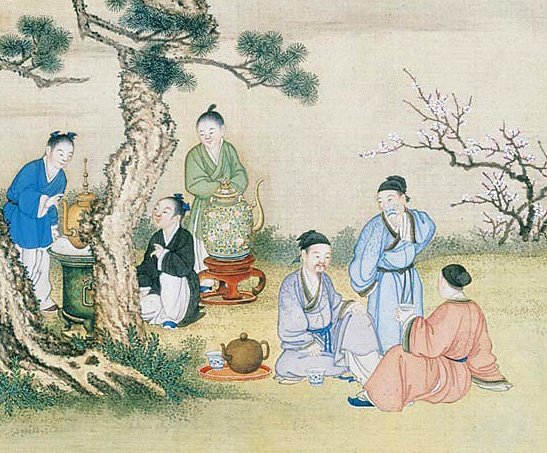Before we start the study of modern tea production technology it is worthwhile learning its history. Chinese are amazing people. They always try something new, experiment, discard the outdated and move on.
The tea had gone all the way from the medical herb to the spiritual beverage and this became possible due to the unique Chinese mentality. Judge for yourselves: the tradition of whisking tea powder (matcha) has come to Japan from China back in 10-th century and remains practically unchanged to the present day. Nomadic tribes many centuries ago have borrowed the custom to boil tea in a pot and still prepare it this way. Europeans have discovered red and green tea, have improved its production and have been drinking it so for 300 years. Even well known Tibetan yak milk tea undergoes no alterations for many centuries.
Meanwhile in China everything is in changes, each century brings more inventions and perfections. Shu pu’er is currently one of the most popular teas in the world still invented only in 1972. This fact seems so perplexing to some beginners that they tend to disregard shu pu’er as a fake tea. But this is absolutely natural for China. The better you learn the way which the tea had made through the centuries the more you understand that shu pu’er is simply the newest type of tea and hardly the last one.
In my narrative I will use the classic Chinese division of tea history into 4 periods: Herb tea period, Soup tea period, Pure tea period, Loose-leaf tea period. This approach is rarely used in our local studies of tea culture however it is quite significant for Chinese tea experts. Fore those, who are willing to deepen their knowledge of tea history, I recommend books available in Russian: «Chinese tea culture» by Wang Ling and «The classic of tea» by Lu Yu. In the course of narrative I will frequently make references therefrom and, off course, quote Lu Yu, who appears to be the most graceful and reliable source of knowledge in regard of Tang dynasty tea culture.
Thus, in China the history of tea is divided into 4 periods:
- First. Herb tea period (from 2700 to 206 B.C.)
- Second. Soup tea period (from 206 B.C. to 618 A.D.)
- Third. Pure tea period (618 - 1368)
- Fourth. Loose-leaf tea period (1368 - to date)


